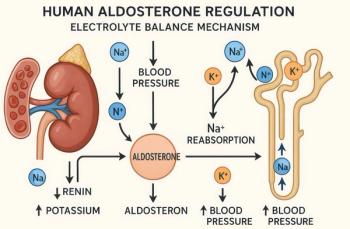
New Menopause Survey Finds Energy Loss, Poor Sleep, and Seasonal Symptoms Most Disruptive
The survey of more than 19,000 American women found low energy and sleep problems more disruptive than VMS and that Autumn is the most symptomatic season.
As World Menopause Day approaches on October 18, new survey data from more than 19,000 US women in perimenopause or menopause highlight how symptom patterns extend far beyond vasomotor changes and for some women, may vary by season.
Low energy (79%) and sleep disturbances (74%) were the most frequently reported symptoms among participants, followed closely by stress and anxiety (72%), brain fog (71%), weight gain (70%), bloating (69%), and joint aches (68%). Classic vasomotor symptoms (VMS) such as hot flushes (67%) and night sweats (65%) were slightly less common, underscoring the broad psychological and cognitive burden associated with midlife hormonal transitions.
The findings, compiled by Health & Her, a menopause-focused digital health platform, suggest that fatigue, sleep disturbance, and mood-related complaints may be more pervasive than traditionally appreciated. “The pattern highlights that psychological, cognitive, and fatigue-related symptoms exceed classic vasomotor symptoms in prevalence,” Health & Her cofounder Kate Bache said in a statement. “Holistic management of menopause should extend beyond hot flushes to address energy, sleep, and mental wellbeing.”
Symptomatic Seasons
A second national survey of nearly 5,000 women identified a notable seasonal pattern, with mood and cognitive symptoms, including low mood, stress, anxiety, and brain fog, peaking in winter. Autumn emerged as the most symptomatic season overall, suggesting that environmental factors such as light exposure, temperature, and activity level may amplify symptom intensity.
These seasonal fluctuations have potential clinical relevance, particularly in settings where mood disorders, fatigue, or cognitive complaints increase during colder months. They may also inform counseling around lifestyle and self-management strategies for women navigating perimenopause and menopause, the survey authors suggested.
Registered nutritionist Rosie Letts, an advisor to Health & Her, noted that dietary and behavioral adjustments can help buffer the physiologic and emotional effects of seasonal change. “Shorter days and colder weather can influence overall balance and wellbeing,” Letts said. “A few simple nutritional tweaks can make the transition into autumn and winter much easier.”
Letts' recommendations can be worked into primary care visits with women seeking relief and include:
- Balancing energy with slow-release carbohydrates (eg, oats, brown rice, sweet potatoes) combined with protein and healthy fats.
- Supporting rest and mood with magnesium- and B-vitamin–rich foods such as leafy greens, nuts, and seeds.
- Supplementing vitamin D and omega-3s when sunlight exposure is limited.
- Promoting digestive health with fermented foods and fiber-rich vegetables.
- Maintaining circadian alignment through morning light exposure, regular movement, and adequate sleep.
Taken together, these data are a reminder to clinicians to recognize the full spectrum of symptoms related to perimenopause and menopause, ie, beyond complaints of VMS, and to consider consider seasonal context when discussing symptom variability and lifestyle interventions.
Source: Research shows low energy and sleeping problems more prevalent symptoms among more than 19,000 American women in perimenopausal and menopausal stages of life. News release. Health & Her. October 17, 2025. Accessed October 17, 2025.
Newsletter
Enhance your clinical practice with the Patient Care newsletter, offering the latest evidence-based guidelines, diagnostic insights, and treatment strategies for primary care physicians.

















































































































































































































































































